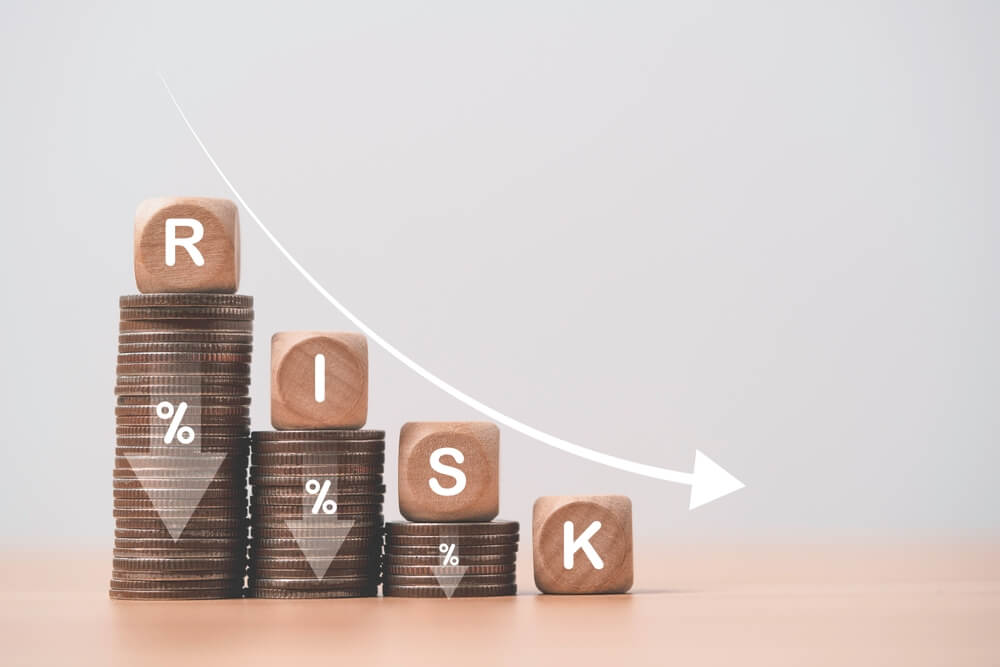
There’s a common misconception about achieving success in trading. While some believe it hinges on finding a high-profitability strategy, others find success by applying various reward-to-risk ratio (RRR) approaches, even with a mediocre trading system. This article delves into RRR and illustrates how adopting a sound reward-to-risk ratio approach can enhance trading outcomes, even without tweaking a reliable strategy.
Article content
What is Reward-to-Risk in Trading?
Reward-to-risk ratio (RRR) is a foundational concept in trading that gauges the potential profit of a trade relative to the risk involved. It quantifies the relationship between the potential reward, often the profit target, and the risk, typically defined as the stop-loss level. A higher reward-to-risk ratio suggests that the potential reward surpasses the risk, making the trade more appealing. Traders commonly use this ratio to evaluate the feasibility of each trade and ensure that the potential reward justifies the risk taken.
For instance, if a trader enters a trade with a profit target of $200 and a stop-loss level set at a loss of $100, the reward-to-risk ratio would be 2:1. This indicates that for every dollar at risk, there’s the potential to gain two dollars in profit. A favorable reward-to-risk ratio implies that the potential reward exceeds the potential loss, making the trade statistically more likely to be profitable over the long term, provided other factors such as win rate and position sizing are managed appropriately.
Effective risk management is crucial to successful trading, and the reward-to-risk ratio plays a pivotal role in this regard. By seeking trades with a favorable reward-to-risk ratio, traders aim to maximize profits while minimizing losses. However, it’s important to recognize that a high reward-to-risk ratio alone doesn’t guarantee trading success. Traders must also consider market conditions, trade probability, and overall trading strategy to make informed decisions and achieve consistent profitability.

Risk-to-Reward Ratio and the Strategy Performance
The long-term trading outcomes depend on the risk-to-reward ratio (RRR) and strategy performance, both of which are interconnected. A higher RRR may lead to lower strategy performance, but it can still contribute to gradual balance growth. For example, let’s consider a trader aiming for a 2:1 RRR. Even with a strategy yielding a 50% success rate, they can enhance their balance over time.
Here’s how it works in practical trading. Suppose a trader executes ten trades, resulting in five wins and five losses. Applying a 2:1 RRR, they risk ten pips per trade while targeting profits of 20 pips. With five losses, the total loss amounts to 50 pips (5 * 10 = 50). However, the profits from the winning trades total 100 pips (5 * 20 = 100).
Overall, the trader gains +50 pips from these ten trades. Scaling up this approach over 20 closed positions would add 100 pips to the trader’s balance.
Keep in mind that spreads and commissions are not factored into these calculations as they can vary. Actual results may slightly differ when implementing this method due to the inclusion of spreads and other charges in live trading sessions.
For those using a 3:1 reward-to-risk ratio approach, even a strategy with a 40% success rate will be enough to make a decent profit. Imagine a trader executing ten trades, with four winners and six losers. With a 3:1 approach, each profitable trade yields 30 pips, while a losing one costs 10 pips. The four winning trades would result in a total profit of 120 pips (4 * 30 = 120), while the six losing trades would incur a loss of 60 pips (6 * 10 = 60).
Use the Reward-to-Risk Approach Wisely
While a higher reward-to-risk ratio can appear enticing, it’s essential to approach it with caution and foresight. Here are a couple of key considerations:
- Set Realistic Goals: When determining trade goals, traders must assess the likelihood of achieving them. For instance, if a trader aims for a 4:1 RRR, expecting to gain 40 pips, but buys an asset only 20 pips away from a robust resistance level, the probability of success diminishes. The price might reverse within the resistance area before reaching the trader’s target, making the trade less favorable.
- Mind the Stop Loss: With a narrow stop loss of just ten pips, if the price is far enough from the previous candlestick’s low, there’s a risk of a retest. This scenario increases the probability of a negative outcome for the trade. Consequently, it may impact the strategy’s overall performance and result in more losing trades within a series of trades.
In essence, while a higher reward-to-risk ratio can be alluring, it’s crucial to balance it with realistic trade setups and prudent risk management strategies to optimize trading success.

Is There a Golden Rule for the RRR Method?
Similar to other aspects of trading, there is no golden rule here. A reward-to-risk ratio should be applied according to the situation and trader’s experience. Novice traders often struggle with patience and may be tempted to cut winners short prematurely. One tip for them is to set clear profit targets and stick to them, resisting the urge to exit trades too early.
Additionally, it’s worth noting that employing a higher RRR may not always be suitable, especially for range-bound strategies where price movements are limited by support and resistance levels. However, when a strong directional movement emerges, traders can capitalize on higher RRRs and patiently aim for substantial profits.
Before settling on a specific reward-to-risk ratio, it’s crucial to assess the current and anticipated market volatility. For instance, the ideal RRR will vary between currency pairs like EUR/USD and BTC/USD.
Continuously refining and adjusting your strategy can be beneficial. By employing various reward-to-risk methods, traders can enhance their results, even if their current trading system exhibits average performance. Align your trading goals with the prevailing market conditions to optimize profits and manage risks effectively. Stay updated on insights, the latest news, offers and promotions by following our Telegram channel. Join us to stay informed and make informed trading decisions with AMarkets.
Recommended reading:






